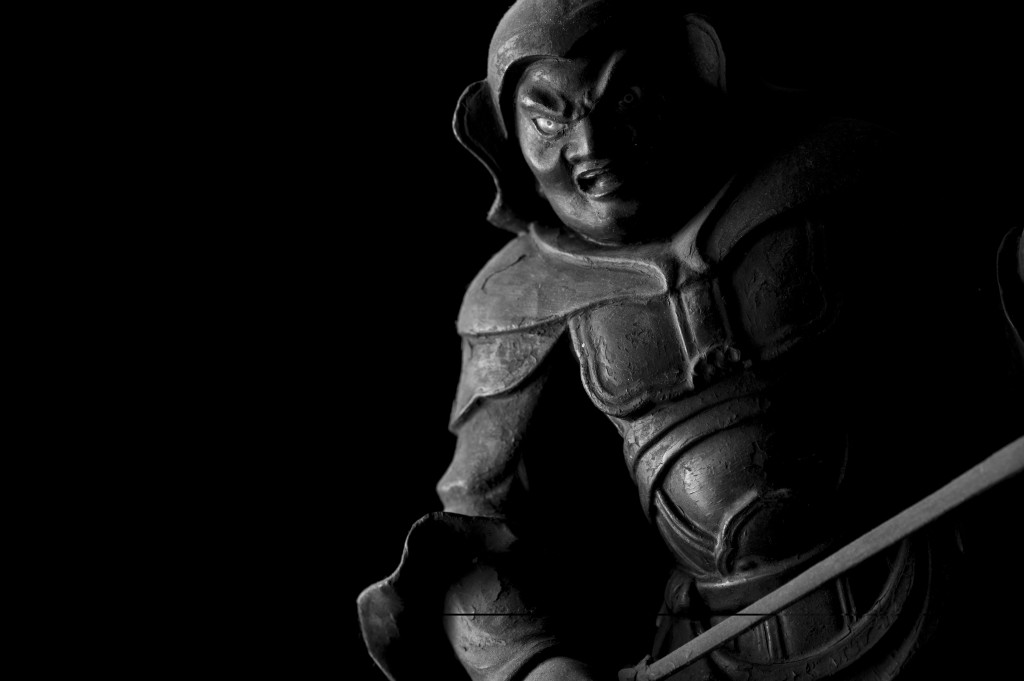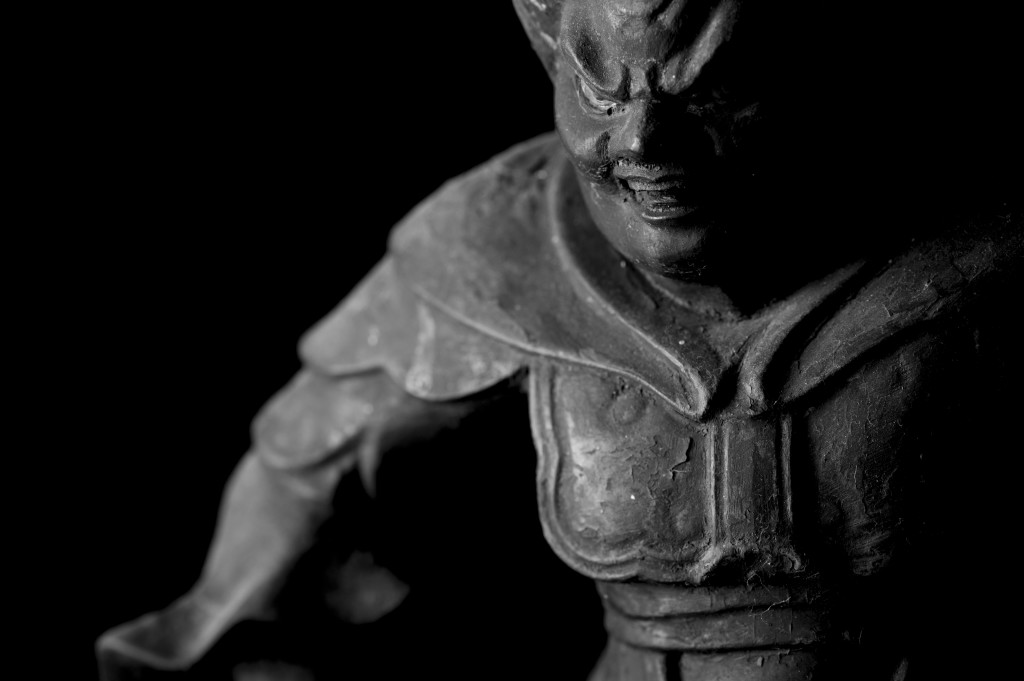In June, I presented images of the Yakushi Nyorai (“Medicine Buddha”) statue at Tokozenji. This month, I’d like to introduce the Twelve Heavenly Generals. These figures are guardian deities of Yakushi Nyorai that correspond to The Twelve Vows (on attaining enlightenment) and wear armor that reflects their respective roles of protection. The number twelve also corresponds with points of direction and the zodiac.
They’re just like twelve avengers! There’s a story behind each general, though none are simply transient heroes. They’re rather deep stories, actually, that wouldn’t be so crazy to turn into Hollywood movies. Kids these days are obsessed with Kamen Rider, Squadron and Ultraman, but all of these no doubt issue from the Twelve Heavenly Generals (at least as I imagine it).
The way Japanese think about religion is unique. Many Japanese who have given birth make a visit to a Shinto shrine. Later visits come at ages 3, 5 and 7. After becoming adults, many will get married at a church. When they die, they’ll have a Buddhist funeral. Between birth and death, many Japanese participate in some form of the three religions of Shinto, Christianity and Buddhism. I think this is probably rare. Certainly the freedom to worship is not unique and is recognized in places around the world, but perhaps Japanese practice the most diversified mix.
 Japan’s native Shintoism is polytheistic. Gods reside in all things. There’s a god of the mountain, of the ocean, of the rice field, and of the river. Just recently we’ve heard a lot about a god of toilets even! Such theism underlies Japanese religious belief and probably explains why Japan can easily accommodate other religions. Shrines and temples are so immersed in the lives of Japanese that many are not even aware of them. It seems that individuals from abroad are much better able to appreciate their charm. When solemnly and pure of mind they pass through the gates, breathe deeply, lower their head before the Buddha and ask for direction with humility, then they certainly seem to be getting a richer experience than they would at, say, the movies.
Japan’s native Shintoism is polytheistic. Gods reside in all things. There’s a god of the mountain, of the ocean, of the rice field, and of the river. Just recently we’ve heard a lot about a god of toilets even! Such theism underlies Japanese religious belief and probably explains why Japan can easily accommodate other religions. Shrines and temples are so immersed in the lives of Japanese that many are not even aware of them. It seems that individuals from abroad are much better able to appreciate their charm. When solemnly and pure of mind they pass through the gates, breathe deeply, lower their head before the Buddha and ask for direction with humility, then they certainly seem to be getting a richer experience than they would at, say, the movies.
Tokozenji, where I was granted permission to photograph the Buddha, is in Kamariya, Kanazawa-ku. I’ve been to a relatively large number of temples and shrines, but this one is wonderful. While neither huge nor particularly glorious, it quietly carries on with the essence of a Japanese temple. Open the big gates wide: this is a place to visit when alive (not at one’s funeral). Because at this very moment of some eternal cycle, this place makes you feel alive!


